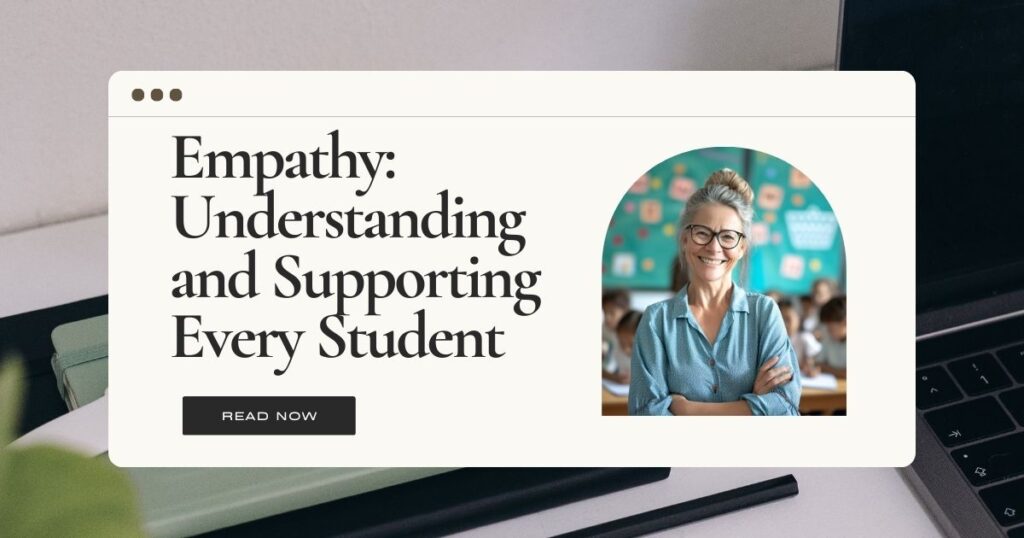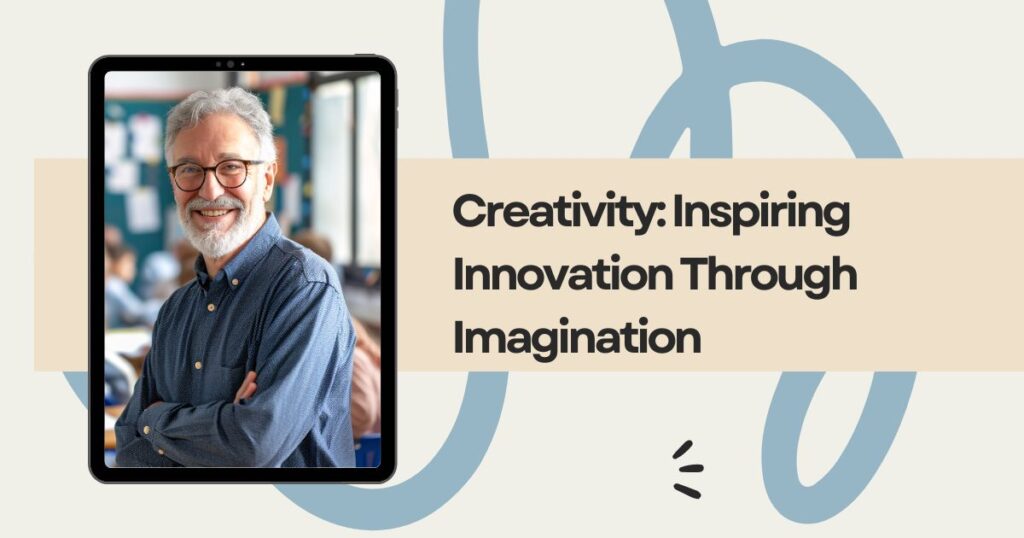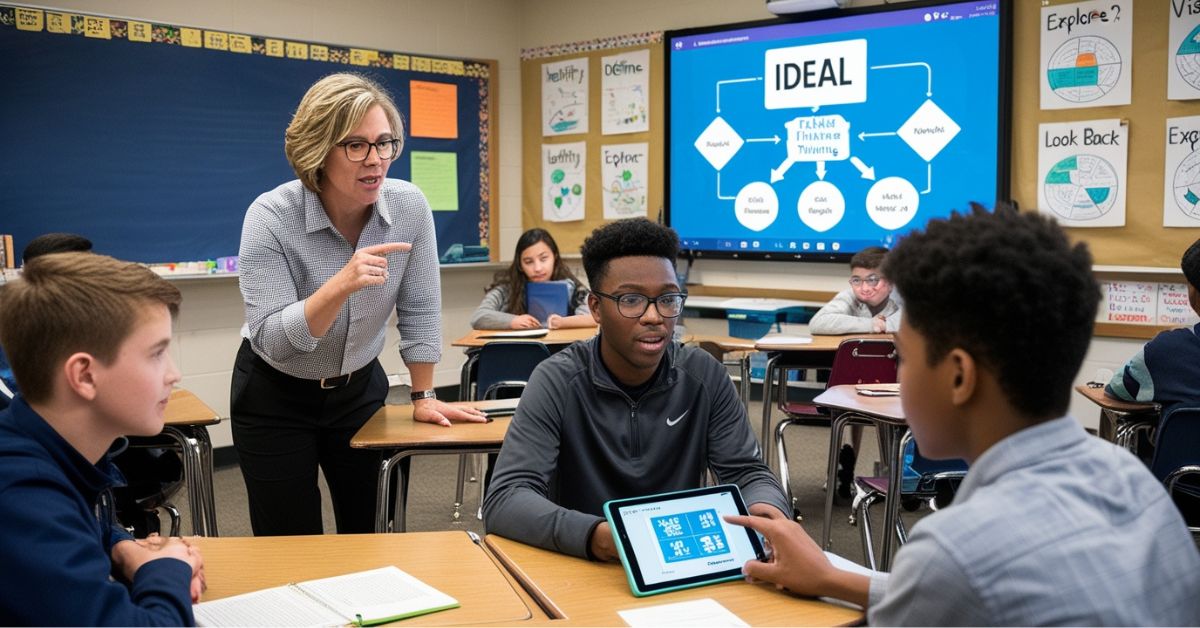Introduction
What makes a good teacher? A good teacher produces minds, changes lives, and recreates learners with a passion for learning throughout their lifetime. They do not only teach – they guide, they inspire and shape the generations of students as if they are lifelong personalities.
Based on this model, what makes a teacher outstanding? There is alchemy in teaching, that is skills, attributes, and commitment that makes a magical classroom.
- Establish education classrooms that are enjoyable for the learner and in which every learner feels special.
- Translate otherwise highly abstract information into easy-to-chew knowledge.
- Cultivate good relationships with their students
- Flexibly approach their teaching practice to fulfil learning profiles.
- Engage learners to learn content develop questions and analyses of lives, and ignite the spark of lifelong learning in their students. They’re not just educators – they’re mentors, guides, and inspirational figures who leave lasting impressions on generations of learners.
What defines a truly exceptional teacher? It’s a combination of skills, attributes, and dedication that creates magic in the classroom. These educators:
- Create engaging learning environments where every student feels valued
- Transform complex concepts into digestible knowledge
- Build strong connections with their students
- Adapt their teaching methods to meet diverse learning needs
- Inspire curiosity and critical thinking
Indeed the quality of teaching goes beyond producing certified academic achievers. Barnett & Boles (2011) State that, through surveys, educational research found out that students who are lucky to be taught by great teachers are more likely to attend college, earn a high salary and be more content in their lives.
Looking for an extra special ingredient to make your teaching even better? Now it will be an interesting task to examine three main types of qualities that great teachers possess and ten crucial characteristics of such figures.
The Impact of Good Teaching on Students and Society

The accomplishments achieved by a talented teacher resonate infinitely dictating the moral templates of lives touched by the retirees and society in general.
- Students complete 1- 1.5 years of education. More academic progress than children who learn from less effective teachers.
- Possess enhanced critical thinking and problem-solving skills
- Have higher self-esteem in learning abilities
- Stay focused on their studies and perform better than they would normally do.
Research consistently shows that students under the guidance of effective teachers:
- Achieve 1-1.5 years of academic growth compared to just 0.5 years with less effective teachers
- Develop stronger critical thinking and problem-solving abilities
- Build higher self-esteem and confidence in their learning capabilities
- Show increased motivation and engagement in their studies
The effects of effective teaching go as far as influencing our society. When teachers excel at their craft, they:
Create Future Leaders: Students learn essential life skills like decision-making, collaboration, and ethical thinking.
Break Cycles of Inequality: Quality education opens doors to opportunities, helping students overcome socioeconomic barriers.
Build Stronger Communities: Well-educated individuals contribute more actively to their communities and civic life.
Drive Innovation: Teachers who inspire curiosity and creativity help develop the next generation of innovators and problem-solvers
These positive effects become multiplied as students turn out to be adopting the roles of adults in society. One teacher, who pays all their professional attention and passion to their calling, can affect the lives of several thousand people they encounter during their lifetime and generations after them. Their impact resonates through:
- The growth and development in any economy
- In the field of science and technology, we report on advancement and discovery.
- These include exposure and appreciation of different cultures or realizing the amount of accommodations a place has for people of different cultures.
- Social justice and equality
The significance of education in this equation cannot be overstated. It serves as a catalyst for all these transformations, making the role of good teaching even more critical.
1. Strong Communication Skills
Clear communication is the foundation of effective teaching. A teacher’s ability to break down complex concepts into digestible pieces transforms challenging subjects into achievable learning goals.
Key aspects of teacher communication include:
- Using precise, age-appropriate language
- Providing step-by-step explanations
- Incorporating visual aids and examples
- Reading non-verbal cues from students
Active listening is equally important in the classroom. Teachers who master this skill:
- Pick up on subtle signs of confusion
- Identify individual learning barriers
- Create space for student questions
- Adapt explanations based on feedback
Building meaningful dialogue requires strategic communication approaches:
- Regular check-ins with students
- Open-ended questions that encourage discussion
- Clear expectations and instructions
- Positive reinforcement and constructive feedback
These communication elements create a dynamic learning environment where students feel heard, understood, and supported in their educational journey.
2. Empathy: Understanding and Supporting Every Student

Compassion is so important, that without it you are just a bad teacher and with it, you could be great. For teachers to be able to reach out to their learners, such can give room for the aspects of learning to thrive.
Creating Safe Spaces for Expression:
- Cultivate students’ coping responses to emotions and feelings
- Provide a bright and cheerful environment and promote healthy conversation with no embarrassment or shame.
- Establish clear goals as many employees feared their manager yet knew that they could go to their manager for advice, support and help when needed.
- Organise certain meetings for participants to afford them an atmosphere to air their emotions.
Building Trust Through Understanding:
- Identify unique learning disabilities
- Hear this assistance with empathy to different extents of student difficulties.
- Ensure the privacy of the students
- At least pay a facade of concern for the students.
That is, an empathetic classroom is a classroom where students perceive that they are appreciated and accepted. Empathy is manifested in the form of watching for signals of students’ discomfort, acknowledging the student’s achievements, and ensuring that instruction is altered to allow the student to handle their emotions. It develops an awareness of feelings that enables learners to foster confidence and accept the acquisition of new knowledge and responsibility for learning.
3. Passion for Lifelong Learning

A good teacher never stops learning. The best educators embrace their role as both teacher and student, constantly seeking new knowledge and skills to enhance their teaching practice.
Key aspects of lifelong learning include:
- Attending professional development workshops and seminars
- Reading educational research and implementing evidence-based practices
- Experimenting with innovative teaching methods
- Learning from student feedback and classroom experiences
- Pursuing advanced degrees or certifications
- Joining professional learning communities
Status changes constantly concerning educational technologies, teaching approaches, and learning processes in students. Another factor impacts the students’ attitude towards learning; when a teacher carries curiosity and enthusiasm for learning the student is likely to adopt the same. They come to their classrooms with new ideas, help other kids and teachers update their curricula, and engage them with happening around the world and real-life uses of what they learn.
This commitment to growth helps teachers maintain their passion for their work while ensuring that their approach meets the needs of current and next-generation students.
4. Adaptability: Meeting Diverse Learning Needs
Effective instructors also know that no two children have the same process of learning. The class needs differentiation to cater to visual, auditory and kinesthetic students to help enhance learning capacity as students learn new things in the classroom.
Key aspects of adaptable teaching include:
- Pausing the lesson when the students are unable to follow the instructions, and then using a different method of teaching to present the content.
- Designing sets of lessons that can accommodate more than one modality of students.
Here, the techniques that involve changing the rate of learning in line with the response from the learners and their grasp of the topic are adopted.
Allowing students to present knowledge in other forms in case they can’t write an essay. A flexible approach to teaching may therefore entail the use of diagrams for the visually impaired, exercises for the kinesthetic, or audio material for the auditory. This adaptability extends to:
- Unable to divide complex topics into smaller sub-groups
- As a result, it offers real-life examples that can be related to students.
- One of the advantages of teaching is to use technology to attend to different rates of children’s learning speed.
- Designing the practice experiences to address the complexity of growth as well as making sure that the kinds of practice that is being offered are right for all individuals.
5. Patience: Nurturing Growth at Every Pace
Teaching is truly about the students and their learning: it does not matter that they may not be progressing at a fast pace. A patient teacher will know that a learner does not learn at the same pace as the other learners or as the teacher expects.
Key aspects of patient teaching include:
- Allowing the students to make time at their own pace to analyze the information presented.
- Speaking calmly during the process of repetition of given instructions or words
- A guide to joining small successes that come within the learning process
Practical strategies to maintain patience:
- Breathe calmly in certain tough situations
- Maintain a growth diary, particularly the students’ improvement.
- Some material may be overwhelming to pupils, and they should be advised to break large topics into easily manageable sub-topics.
- Reward the child to help her persevere: People should reward the child in instances when she is most likely to quit experimenting.
Understanding teachers knows that failures will always be in our way to success. When students feel the presence of their teacher as wisely constant behind them they crop up the courage to contend with difficulties without considering them as pressures to hurry.
6. Creativity: Inspiring Innovation Through Imagination

- High-quality teaching makes boring lessons fascinating to learners. They bring subjects to life through:
- Live action – turning history into interesting story ends.
- Real-world applications- Relating Symbols, or concepts with real-life contexts.
- Experiments that people can try for themselves – Turning concepts into reality.
- “Do as I do” procedures – Literature characters and scenarios in role-play.
- They help to generate interest and make learners seek solutions other than formal-text ones.
Creative teaching approaches include:
- Employing melody and beat to translate language patterns.
- It discussed using art projects to illustrate specific concepts that can be explained in science.
- Teaching strategies: how to come up with casual games to be used in a classroom that supports learning achievement of specific goals.
- Introducing information technologies that are appealing to liberal learners. An environment in a classroom that fosters creativity is an environment that creates imagination when implementing lesson plans and addressing academic curriculum. Students learn all the concepts about other subjects and also in problem solving where they are encouraged to think outside the box.
7. Collaboration: Building Strong Partnerships for Success
Teaching as a profession has constantly benefitted from healthy partnerships. Successful educators build connections with:
- Fellow Teachers: Exchanging ideas on lessons, discussing approaches to problems, and sharing ideas on managing children’s classroom behaviour
- Parents: Information sharing through newsletters, conferences and information technology to ensure educational goals are achieved
- Community Members: Guest speakers, field trips and application of community lessons
A cooperative model fosters a community of individuals who supplement a student’s learning process. Teachers who participate in professional learning communities see improved student outcomes through:
- CDCs, tangible resources and pedagogical approaches.
- Interdisciplinary activities that bring enthusiasm from the learners
- A synthesis of the panel’s professional experience to meet complex learning needs
The most effective educators recognize that student success depends on these collaborative relationships. They actively seek opportunities to work with others, share their knowledge, and learn from different perspectives.
8. Respectfulness: Fostering an Inclusive Learning Environment
Respectful teachers create classrooms where every student feels seen, heard, and valued. They:
- Celebrate cultural differences as learning opportunities
- Address students by their preferred names and pronouns
- Create discussion guidelines that encourage respectful dialogue
- Use diverse teaching materials that represent various cultures
- Challenge stereotypes and biases when they arise
A truly inclusive classroom empowers students to:
- Share their unique perspectives without fear of judgment
- Learn from their peers’ diverse experiences
- Develop cross-cultural communication skills
- Build confidence in their identity and background
- Feel comfortable asking questions and seeking help
Respectful teachers understand that each student brings valuable insights and experiences to the classroom. They actively create opportunities for students to learn from one another, fostering mutual understanding and appreciation across different backgrounds, abilities, and learning styles.
9. Preparedness: Equipping Students for Success
A prepared teacher creates magic in the classroom. Effective lesson planning goes beyond simply outlining topics – it’s about crafting learning experiences that resonate with each student’s unique abilities and interests.
Key elements of impactful lesson planning include:
- Identifying clear learning objectives that align with student capabilities
- Creating varied activities that engage different learning styles
- Creating the possibility of response shifts into student behaviours
- You can use authentic materials by linking these materials to students’ experiences.
Based on the identification of such concepts and areas, contingency material can be provided to learners who require more guidance or extension.
Some of the lessons, which are well thought out with very much detail, seem to the learners to be contrived and spontaneous to a fault. Teachers who invest time in thoughtful preparation create classroom experiences where students can:
- Approach tasks at their teaching rate
- Sustainable development can therefore be seen as relevant to learning as follows.
- The other way is to build confidence by ensuring that the set goals are achievable.
- Learn skills that can be taken into practice and used immediately
This intentional approach of lesson making turns the learning concepts into little explorations into a world of knowledge that the students carry with them after leaving the class.
10. Growth Mindset: Cultivating Resilience in Learners
A growth mindset takes the classroom learning environment to a new level where they make errors valuable in the process of success. Teachers with this attitude consider learning disability as an aspect that each child may overcome if he or she works harder.
Key Elements of a Growth Mindset Approach:
- Replacing ‘I can’t’ with ‘I can’t yet’
- One of our learning tenets is recognizing and rewarding processes not just outcomes.
- Promoting exploration of risk factors in problem-solving
One of the ways teachers establish communication is by teaching life and students understand that even the teacher makes mistakes. When the students observe their teachers charging at new tasks proactively, the students themselves become ready to go the extra mile.
Practical Ways to Foster Growth Mindset:
- Arrange student work in a way that demonstrates advancement.
- Promote particularity in citing exact improvement strategies targeted at the effort.
- Provide opportunities for students to make revisions to the final product.
- Tell biographies of prominent personalities who achieved their goal despite failure.
- Accepting the Values That Defining Great Teachers
Conclusion
It is therefore the intention of this paper to examine ten key mentor qualities that can transform a good teacher into a great one. All of these include; This one leads to another and brings about positive change in students’ lives factors include but are not limited to;
These qualities work together to:
- How can we turn regular class interactions into special learning events?
- Create confident, resilient and engaged learners
- Coordinate constructive positive change that transcends academic performances
However, it is crucial for every individual personally interested in teaching, as well as every experienced teacher, to work on these qualities throughout the entire teaching-learning process. Start by:
- Identifying sectors that can be coloured as your strengths.
- Selecting one quality to build for each semester.
- Engaging students and other teachers for their opinions.
- Wins that are accomplished in the course of implementing a change strategy
Remember: Professionally qualified teachers are not endowed with the qualities of teaching, they are nurtured through processes of professionalism. Just as these critical qualities can be developed, you can always mould minds, touch hearts, and change lives for the better.
Your commitment to excellence in teaching today builds the foundation for tomorrow’s leaders, innovators, and change-makers.
FAQs (Frequently Asked Questions)
1. What are the essential qualities that make a good teacher?
A good teacher, much like any other profession, has to possess several inherent attributes namely communication skills, interpersonal/quasi-interpersonal skills, character/climate, cognitive, behaviour, and professional skills, courtesy, courtesy/ professional manner, courtesy/ethical practices, and courtesy/attitudes respectively, passion to learn, versatility, tolerance, innovativeness, teamwork, respect, work ethic, and positive mental attitude. All of these traits play a role in teaching and enhance students’ success accordingly.
2. How do good teachers influence student outcomes?
Effective teachers play a central role in student performance by participating in the learning process and helping in the development of student’s educational climate. In this model, they use positive communication and try to assess the learning needs of each learner so that no learner will feel that he/she is neglected in learning.
3. Why is empathy important in teaching?
Tolerance is valuable as a lesson since it helps teachers recognize every student’s difficulties. The most important aspect of a classroom is the mutual respect upon establishment where every student feels comforted when presenting their opinions, and ideas, and this would help in creating and developing special relationships between teachers and learners.
4. What role does creativity play in effective teaching?
Creativity is important to teaching since it enhances the development of good lesson plans as a way of provoking critical thinking among learners. It is shown that it is possible to use creative approaches that would make students engaged and learning activities meaningful in terms of learning goals. The creative activities have been found to improve the student interest and their level of participation.
5. How can teachers demonstrate a growth mindset?
Teachers indeed should set an example of growth in action they embrace by believing in the ability to change and improve, and in difficulties as growth opportunities. They set the tone by being resilient themselves and by helping students embrace the same attitude, everyone, including teachers and students, pursues growth continually.
6. What is the importance of preparedness in teaching?
Luck is an important factor in teaching since effective preparation is encouraged to develop teaching approaches that share content that is accessible to learners. This makes it possible for lessons to be made available in such a manner that they are going to address the needs of all students satisfactorily. Apparently being prepared ensures that teachers set rooms to ensure structures, which enhance success in learning.
You may like to read:- Building a Better Classroom with Teacher’s Skills
- How to Dominate Your Online Business With 5 Proven Digital Marketing Strategies
- How to Cultivate Critical Thinking and Problem-Solving Skills in Classroom
- Top Proven Mental Health Strategies for Schools in 2025-26
- Time Management for Teachers: How to Plan, Prioritize, and Perform Better
- How Parental Involvement in Education Shapes a Child’s Growth and Success




Wonderful.